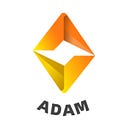The commercial application of on-chain data is still not fully developed, which wastes a lot of open and transparent high-quality information. Only by turning on-chain data into “assets” that fit neatly into the frameworks associated with traditional asset classes will it be possible to increase institutional investor investment and adoption of it. The DataFi proposed by ADAM is an advanced model that promotes the transformation of on-chain data into “assetization”. It is believed that this model will be effectively popularized soon.
ADAM believes that on-chain data is the best research target for developers to fundamentally analyze the future direction of blockchain and cryptocurrency. In order to efficiently utilize the complex on-chain data, it is necessary to fully consider the unique attributes of various types of data, so as to mine their commercial value in a targeted manner.
DataFi is a “processed” commercial on-chain data application. It combines the real world with on-chain data, using structured or unstructured data such as text, images, databases, etc., and can be used for DeFi, NFT, Metaverse and other chains. The application directly or indirectly brings economic and social benefits. At the same time, ADAM enables every role involved in data circulation, such as production data, calculation data, transmission data, storage data, and data usage, to obtain corresponding benefits.
With the help of DataFi, users will increasingly appreciate and mine the investment and application value of data on the chain through the perspective of a new framework. Although traditional analysis frameworks are not suitable, ADAM provides a unique set of on-chain data processing tools that users can use to add value to on-chain data and obtain corresponding benefits.
Just like a government statistical agency releases data about a country’s population and economy, or a public company releases quarterly financial statements that disclose growth rates and earnings, DataFi builds a closed-loop economic ecosystem about blockchain network activity and internal data. In the absence of central control, the open source data provided by the blockchain network can be effectively utilized and realize value flow.
In DataFi applications, ecological participants can obtain on-chain data to analyze on-chain data more deeply than any other traditional asset. Before delving into the details, the DataFi app assesses the overall state of the data on-chain.
For example: via wallet addresses, the DataFi app can expose each holder’s position and cost basis at any time of day. In the long run, the price of on-chain data may be more responsive to raw network health data, but in the short to medium term, the behavior of buyers and sellers can help investors discover in the pricing and evaluation of this unproductive product Inefficient assets.
For low-utilization data, the DataFi app provides relative evaluation metrics that can identify short- and medium-term inefficiencies in on-chain data prices. The top data layer is particularly useful for active managers, providing buy and sell signals in crypto markets, much like relative valuation multiples such as EV-EBITDA in public equity markets.
DataFi applications can leverage on-chain data to provide a new framework for analyzing emerging monetary assets. As institutional investors gain exposure to on-chain data, we believe the data layer of the ADAM network will enhance their understanding and confidence in its rationale. Throughout the series, ADAM aims to unleash the power of on-chain data and describe the tools and techniques that enable investors to turn raw open source data into actionable investment decisions.
